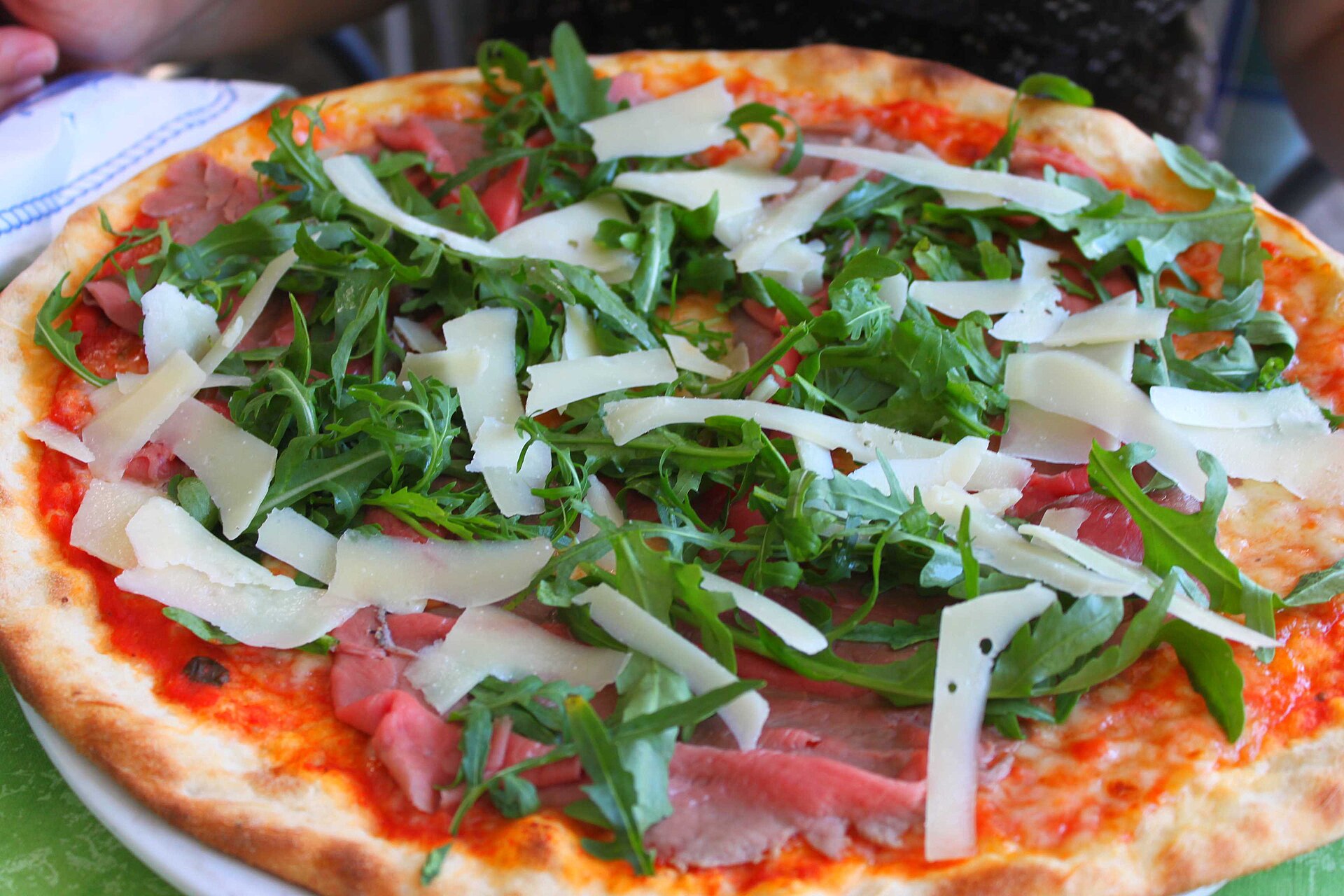Food & Drink in Italy
Food & Drink in Italy
Italy is more than a destination—it’s a sensory experience, and nothing defines it better than its food and drink culture. From the rustic kitchens of Tuscany to the bustling street food markets of Palermo, Italian cuisine is regional, seasonal, and always passionate. In this guide, we explore the dishes, drinks, and dining customs that make Italy one of the world's most celebrated food destinations.

A Nation of Regional Flavors
Italian cuisine isn’t one-size-fits-all. Each of the 20 regions has its own specialties based on local ingredients, traditions, and history.
🍕 Northern Italy: Creamy & Comforting
- Risotto alla Milanese (Lombardy): Saffron-infused creamy rice.
- Polenta (Veneto & Friuli): Cornmeal porridge often paired with stews.
- Pesto Genovese (Liguria): Fresh basil, pine nuts, and olive oil blended into a vibrant sauce.
🍝 Central Italy: Rustic & Rich
- Bistecca alla Fiorentina (Tuscany): Grilled T-bone steak served rare.
- Tagliatelle al Ragù (Emilia-Romagna): Known internationally as Bolognese sauce.
- Porchetta (Umbria): Herb-roasted pork typically served as a sandwich.
🌶️ Southern Italy: Bold & Flavorful
- Pizza Margherita (Naples): The birthplace of pizza—tomato, mozzarella, and basil.
- Arancini (Sicily): Deep-fried rice balls stuffed with ragu or cheese.
- Orecchiette con Cime di Rapa (Puglia): “Little ear” pasta with sautéed turnip greens.
🍽️ Discover more about regional diversity in our Top Destinations in Italy guide.
Dining Customs & Meal Structure
🇮🇹 How Italians Eat
Italian meals follow a structured order, often with multiple courses:
- Antipasto – Appetizer (e.g. bruschetta, cured meats)
- Primo – First course (usually pasta, risotto, or soup)
- Secondo – Main course (meat or fish)
- Contorno – Side dish (vegetables or salad)
- Dolce – Dessert (like tiramisù or panna cotta)
- Caffè – Espresso
- Digestivo – After-dinner liqueur (e.g. grappa or limoncello)
🕒 Meal Times
- Breakfast (Colazione): Usually a quick espresso and a pastry.
- Lunch (Pranzo): The largest meal, served between 12:30–2:30 p.m.
- Dinner (Cena): Starts around 8 p.m., often lighter than lunch.
🍷 For meal timing and etiquette, visit Travel Tips for Italy.
Famous Italian Dishes to Try
- Lasagna alla Bolognese – Layered pasta with meat sauce and béchamel.
- Carbonara – Roman pasta with egg, pecorino, guanciale, and black pepper.
- Gnocchi – Soft potato dumplings served with various sauces.
- Saltimbocca – Veal topped with prosciutto and sage, cooked in white wine.
Iconic Italian Desserts
- Tiramisù – Layers of coffee-soaked ladyfingers, mascarpone, and cocoa.
- Cannoli – Crispy pastry tubes filled with sweet ricotta (Sicilian).
- Gelato – Denser and creamier than traditional ice cream.
- Panettone – Sweet holiday bread with dried fruits (especially at Christmas).
Italian Drinks: From Espresso to Aperitivo
☕ Coffee Culture
- Italians drink espresso throughout the day.
- Cappuccino is only for breakfast—ordering one after noon is considered touristy.
- Caffè macchiato or caffè corretto (with liquor) are popular alternatives.
🍸 Aperitivo Hour
Typically between 6–8 p.m., the aperitivo is a pre-dinner social ritual.
- Drinks: Spritz (Aperol or Campari), Negroni, Prosecco.
- Snacks: Olives, cheeses, focaccia, mini sandwiches.
🍹 Want to experience aperitivo like a local? Visit neighborhoods like Milan’s Navigli or Florence’s Oltrarno.
Wine & Vineyards
Italy is the world’s largest wine producer, and nearly every region grows grapes.
🍇 Key Wine Regions
- Tuscany: Chianti, Brunello di Montalcino.
- Piedmont: Barolo, Barbaresco, Moscato d’Asti.
- Veneto: Prosecco and Amarone.
- Sicily: Nero d’Avola, Marsala.
🍷 Wine Tasting Experiences
- Book vineyard tours in Tuscany or Piedmont.
- Try enotecas (wine bars) in Rome, Florence, or Bologna.
- Attend wine festivals like Vinitaly in Verona (April).
🚴 Pair your wine with scenic views—see Adventure & Activities in Italy for e-bike wine tours.
Street Food & Market Culture
Markets are central to Italian daily life and offer fresh produce, cheeses, meats, and quick bites.
- Rome: Try trapizzino or supplì (fried rice balls).
- Palermo: Explore Ballarò Market for panini con milza (spleen sandwich).
- Florence: Visit Mercato Centrale for truffle sandwiches or fresh pasta.
Eating Out: Tips for Tourists
- Coperto: A cover charge (often €1–€3) added to your bill.
- Pane e coperto: Bread is charged separately.
- Service (servizio): If already included (usually 10%), no need to tip extra.
- Water: Tap water is safe, but still or sparkling bottled water is commonly ordered.
Sustainable Dining
Support Italy’s Slow Food Movement, which promotes local, seasonal, and ethical eating. Look for:
- Agriturismos – Farm-to-table experiences in the countryside.
- KM0 Restaurants – Serving locally-sourced produce.
- EcoCert Labels – Indicate sustainable or organic certification.
🌱 Learn more in our Sustainable Tourism in Italy article.
Conclusion
Eating in Italy is not just nourishment—it’s a cultural celebration. Whether you’re sipping wine in Tuscany, tasting street food in Naples, or enjoying a seaside aperitivo in Liguria, every bite connects you to centuries of tradition and pride. So slow down, savor each course, and immerse yourself in Italy’s culinary soul.
